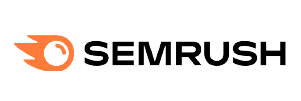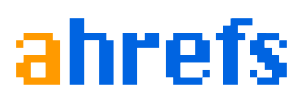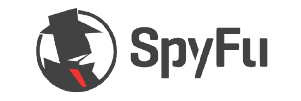Key SEO Terms You Should Know (Comprehensive Glossary)
If you’re new to SEO (Search Engine Optimization) then some of the technical terms and vocabulary used by SEO Tools can feel a little overwhelming. In this glossary of key SEO terms we’ve simplified each term you might come across providing an easy to understand definition that beginners and experienced marketers can understand.
Help improve your SEO knowledge today with this quick to use technical jargon decoder.

SEO Terms & Meanings
This SEO glossary is in alphabetical order, so you can easily skim to a term you want to find the meaning of. You might want to save this page for your reference later. We also have a whole section of helpful SEO content, guides and resources for you to look through. Be sure to sign up to our TuffYeti newsletter for content like this and more.
301 Redirect
An HTTP status code indicating that a webpage has permanently moved to a new URL. This ensures visitors and search engines are automatically redirected to the new page, preserving most of the original page’s SEO value.
302 Redirect
An HTTP status code that indicates a webpage has temporarily moved to another URL. This redirect tells search engines to keep the original URL in their index once the temporary change is over.
404 Not Found
An error message shown when a webpage can’t be found on the server. This may happen if the URL was typed incorrectly or the page was deleted.
200 OK
An HTTP status code that indicates the request to view a webpage was successful, meaning the webpage is live and accessible.
ALT Text
An HTML attribute that is used to describe an image. ALT text is crucial for accessibility (helping visually impaired users) and SEO, as it provides context for search engines about what the image is.
Algorithm
A set of coded rules used by search engines to determine how a website should be ranked in search results. Google’s algorithm, for instance, considers hundreds of factors like content relevance, page speed, and mobile-friendliness.
AMP (Accelerated Mobile Pages)
A framework developed by Google aimed at decreasing the load times of mobile web pages. AMP pages have reduced HTML and run with limited JavaScript helping to enhance their performance on mobile devices.
Anchor Text
The clickable text in a hyperlink. This text helps both users and search engines understand what the linked page is about. Optimizing anchor text is a valuable SEO feature which can help improve the ranking of your target page.
Average Position
A metric in Google Search Console that shows the average rank of a website for a given search query over a period of time. A lower average position number is better (indicating higher ranking).
Backlink
A link from an external website pointing back to your website. Quality backlinks from reputable websites can significantly improve your site’s search engine ranking.
Black Hat SEO
Unethical SEO tactics used to manipulate search rankings, often involving tactics like keyword stuffing, cloaking, or using invisible text. Black hat SEO is frowned upon and can result in penalties or being banned from search engines.
Bot
A program that search engines use to crawl websites and index their content. Bots help search engines discover new pages and determine their relevance.
Bounce Rate(%)
The percentage of visitors who leave a website after viewing only one page. A high bounce rate potentially indicates poor user experience (UX) or irrelevant content.
Branded Keyword
Keywords that include a specific brand’s name or products. These are often used to target brand-specific searches or boost brand recognition.
Breadcrumb
A navigation tool that shows users their location within a website. It typically appears as a trail of clickable links (e.g., Home > Products > Product Category > Product).
Canonical URL
The preferred version of a webpage URL when multiple URLs can access the same content. This helps prevent duplicate content issues by directing search engines to index the original page.
Citation
A mention of a business’s name, address, and phone number (NAP) on another website, particularly important for local SEO and improving local search rankings.
Cloaking
A deceptive SEO practice where different content is shown to search engines than to human visitors. Cloaking is a violation of Google’s guidelines and can lead to algorithmic or manual penalties.
Comment Spam
Irrelevant comments posted on blogs or websites, typically to create backlinks or increase keyword rankings. These comments are often deleted by website admins to prevent SEO manipulation.
Content
Any media that includes text, images or videos used on a website to engage visitors. Quality content that provides value to users is a key factor in SEO performance.
Conversion
The action taken by a website visitor that is valuable to a business, such as making a purchase or filling out a contact form. Increasing conversions is a central goal of many SEO strategies.
Core Web Vitals
Googles set of metrics to measure page performance and user experience, focusing on website loading speed, interactivity, and visual stability.
Crawling
The process through which search engine bots find and index new or updated content by following links from one webpage to another.
Crawler/Spider
Automated programs, often referred to as bots or spiders, that scan and index the content of websites for search engines like Google.
CTR (Click-Through Rate)
The percentage of users who click on a specific search result or ad compared to the total number of times the result is shown.
Deep Linking
Linking to a specific page within a website (as opposed to the homepage), helping search engines index deeper content and improving user navigation.
Description Tag
An HTML meta tag providing a brief description of a webpage’s content. It is often displayed below the title in search engine results.
Domain Authority (DA)
A ranking score created by Moz that estimates the likelihood of a website ranking in search engine results, based on factors like backlinks, content quality, and trustworthiness.
Doorway Page
A page created with the intent to rank for specific keywords and funnel visitors to another page. This practice is often seen as manipulative and can be penalized by search engines.
Duplicate Content
Content that appears on more than one page or website. Search engines may have a hard time figuring out which version of the page to rank, potentially harming your site’s SEO.
Dofollow Links
Links that pass on SEO authority from the linking page to the linked page, helping improve the target page’s rankings.
EEAT (Experience, Expertise, Authoritativeness, Trustworthiness)
A framework used by Google to evaluate the quality and trustworthiness of online content. Content that satisfies these criteria is more likely to rank well.
Evergreen Content
Content like posts, and pages, that remains relevant and valuable to users over time, continuing to attract traffic long after it’s published.
Exact Match Keywords
Keywords that exactly match the search query entered by a user. They are highly targeted but can be more competitive to rank for.
External Link
A link on your website that directs users to a page on a different website. External links can help with SEO by associating your page with credible external sources.
Featured Snippet
A prominent search result box shown at the top of some Google search results, offering an immediate answer to the user’s query.
Google Business Profile
A free tool created by Google that businesses can use to help manage their presence in Google Search and Google Maps, providing information like business hours and contact details.
Google Search Console
A free tool created by Google that helps website owners monitor their site’s performance in search, track indexing status, fix technical issues, and optimize their SEO.
Guest Blogging
Writing articles for another website in exchange for backlinks and exposure, helping build authority and drive traffic to your own site.
Heading Tags
HTML tags (H1, H2, H3, etc.) used to structure content and show its importance. The H1 tag typically contains the main title, and subsequent headings (H2, H3) break down the content into sections.
.htaccess
A configuration file used by Apache web servers to manage various settings and functions like redirects, security settings, and URL rewriting.
Impressions
The number of times a webpage or advertisement is displayed to a user, regardless of whether it is clicked.
Inbound Link
A link from an external website to your own. Inbound links are a valuable SEO signal that search engines use to determine trust and authority in a subject.
Inbound Marketing
A strategy that focuses on attracting visitors through valuable content and organic search rather than outbound tactics like advertising.
Indexing
The process through which search engines store and categorize web pages, enabling them to appear in search results.
Internal Link
A link that connects pages within the same website to eachother. Internal linking can help users navigate the site more effectively and search engines understand the structure of the websites’ content.
Keyword
A word or phrase that users type into a search engine to find information. Keywords are crucial for SEO, as they help search engines understand the content of a page.
Keyword Density
The percentage of times a keyword appears in your content compared to the total number of words in it. ie. (Number of Words / Keyword Appearances) / 100. Overusing keywords can lead to keyword stuffing and penalties.
Keyword Difficulty
A indicator to estimate how hard it will be to rank for a specific keyword based on competition and other factors like backlinks.
Keyword Marketing
A strategy where businesses target specific keywords to attract relevant traffic and increase conversions, often through paid advertising or organic SEO.
Keyword Stuffing
The practice of overusing keywords in content in an unnatural way, typically to manipulate rankings. This can potentially lead to algorithmic and manual penalties from search engines.
Keyword Cannibalization
When multiple pages on the same website target the same keyword, which can confuse search engines and hurt rankings.
Keyword Research
The process of identifying and analyzing search terms that users use to find relevant content. Keyword research helps guide content creation and SEO strategy.
Link Building
The method of acquiring backlinks from other websites to improve your site’s authority and rankings in search engines.
Link Bait
Content specifically created to attract backlinks, such as infographics or in-depth guides.
Link Juice
The SEO value passed through links. High-quality links from reputable sites pass more link juice and help improve rankings.
Long Tail Keywords
Keywords or phrases that are longer and more specific. They often have lower search volume but can have higher conversion rates due to their specificity. For example: “Best seo audit tools that you can use as a beginner“.
Local SEO
Optimizing your website to rank higher in location-based search results, helping local businesses connect with potential customers in their area.
Manual Submission
Submitting a website URL to search engines manually for indexing, instead of waiting for search engines to discover the site on their own.
Meta Description
A short description (usually 150-160 characters) of a webpage that appears under the page title in search results. It’s an important factor for enticing clicks.You can use our free Meta Length Checker to refine their length and instantly see how they show up in Google SERPs.
Meta Tag Generator
A tool that assists in creating meta tags, such as title and description tags, for webpages.
Meta Tags
HTML elements that provide metadata about a webpage. These include the title tag, description tag, and other tags that help search engines know what your content is about.
Mobile First Indexing
Google’s approach to using the mobile version of a website (content, styling etc.) as the primary version for indexing and ranking, as mobile traffic has become dominant.
Meta Title
The title of a webpage which is displayed in search results and browser tabs. The meta title should contain relevant keywords and be descriptive.
Negative SEO
Tactics used to harm the ranking of a competitor’s website, such as building low-quality backlinks or copying content. It is unethical and can result in penalties.
Nofollow Link
A link with a tag indicating to search engines that they should not pass ranking authority to the linked page. Nofollow links do not affect SEO directly.
Noindex
A directive used in HTML or a meta tag to tell search engines not put the page in its index, preventing the page from appearing in search results.
Organic Search
The natural results that appear in search engine listings without paid promotion. Achieving high rankings in organic search requires strong SEO practices.
Outbound Link
A link that points from your website to an external website. Outbound links to authoritative sources can improve the credibility of your content.
Optimization
The process of improving various aspects of a website to increase its performance, usability, and SEO rankings. It includes factors like content quality, site speed, and mobile optimization.
PageRank
A ranking system developed by Google that measures the authority of webpages based on the number and quality of backlinks. It’s no longer the primary ranking factor but still plays a role in SEO.
Pageviews
The total number of times a specific webpage is viewed, regardless of whether it’s the same user or a different user.
PPC (Pay-Per-Click)
A type of digital advertising where advertisers pay every time their advert is clicked. It’s a monetization model commonly used in search engine advertising including Google Ads.
Rank Tracking
The method of monitoring your website’s rankings for keywords your targeting over time. This helps you assess the effectiveness of your SEO strategy.
Reciprocal Links
Links exchanged between two websites, where each site links to the other. While they can be beneficial, search engines may view them as less valuable than one-way links.
Robots.txt
A text file stored on the server which is used to communicate with search engine crawlers, instructing them on which pages of a website should or should not be crawled and indexed.
Schema Markup
A structured data format used to provide search engines with additional information about the content on a webpage, helping to enhance search results with rich snippets.
Search Engine
A tool like Google, Bing, or Yahoo that allows users to search for content on the internet. It works by crawling and indexing websites and then prioritising the pages found based on relevance.
Search Intent
The reason behind a user’s search, whether they are looking for information or making a purchase. Understanding search intent is a key SEO technique used for effective keyword targeting.
Search Engine Submission
The act of submitting a website’s URL to search engines, either manually or through a sitemap, so they can discover and index its content.
Search Partners
Websites and platforms that partner with search engines like Google to display their ads. These can include third-party websites or other networks that show search engine ads.
Search Query
The exact words or phrases a user types into a search engine. Search queries can be broad or specific, depending on the user’s intent.
SERP (Search Engine Results Page)
The page shown by a search engine after a user enters a query, displaying the list of results along with advertisements and other features like rich snippets.
Sitemap
A XML of HTML file that lists all the pages of a website, helping search engines find and index the content more efficiently.
Skyscraper Technique
A content strategy where you create high-quality content that surpasses your competitors’ content in detail and value, encouraging backlinks and traffic.
Soft 404
A page that appears to be valid to users but is treated as non-existent by search engines. This can occur when a page doesn’t return a proper 404 error code but lacks valuable content.
Technical SEO
The practice of improving a website’s technical infrastructure (e.g., page speed, mobile responsiveness, and crawlability) to help search engines index and rank it better.
Thin Content
Pages with little useful or relevant content, often offering minimal value to visitors. Thin content can negatively affect search engine rankings.
Time on Page
The amount of time a visitor spends on a webpage. A longer time on page typically indicates engaging and relevant content.
Title Tag
An HTML element that defines the title of a webpage. It appears in the search engine results and browser tab and is important for both SEO and user experience.
URL (Uniform Resource Locator)
The address of a webpage on the internet. It’s what users type into the browser’s address bar to access a specific page or resource.
User Experience (UX)
The experience a user has when interacting with a website. This includes things like how easy it is to navigate and how engaging the content is.
Voice Search
A method of searching where users speak their query instead of typing it, often through devices like smartphones or smart speakers. You can optimize your website for voice search by using common questions and structuring your content for search terms.
Website Speed
The time it takes for a webpage to fully load. Faster websites are favored by search engines as they typically provide a better user experience.
XML Sitemap
An XML file that lists the URLs of a website to help search engines efficiently crawl and index the content.
Best SEO Tools to Use Your New Found Knowledge
Now that you’ve increased your SEO knowledge, it’s time to put it to good use. Here’s our pick of some of the best SEO tools for small businesses you can use for keyword research, competitor research, and more.
- Keyword domain & backlinks analytics
- Create reports
- Track mobile rankings
- Keyword tracking & more
- Site audits to optimise your site
- Analyse competitors keywords & backlinks
- Explore content, keywords & track rankings
- Free learning materials & community support
- Competitor analysis
- Rankings tracker
- Backlinks builder
- Keyword research & comparisons


